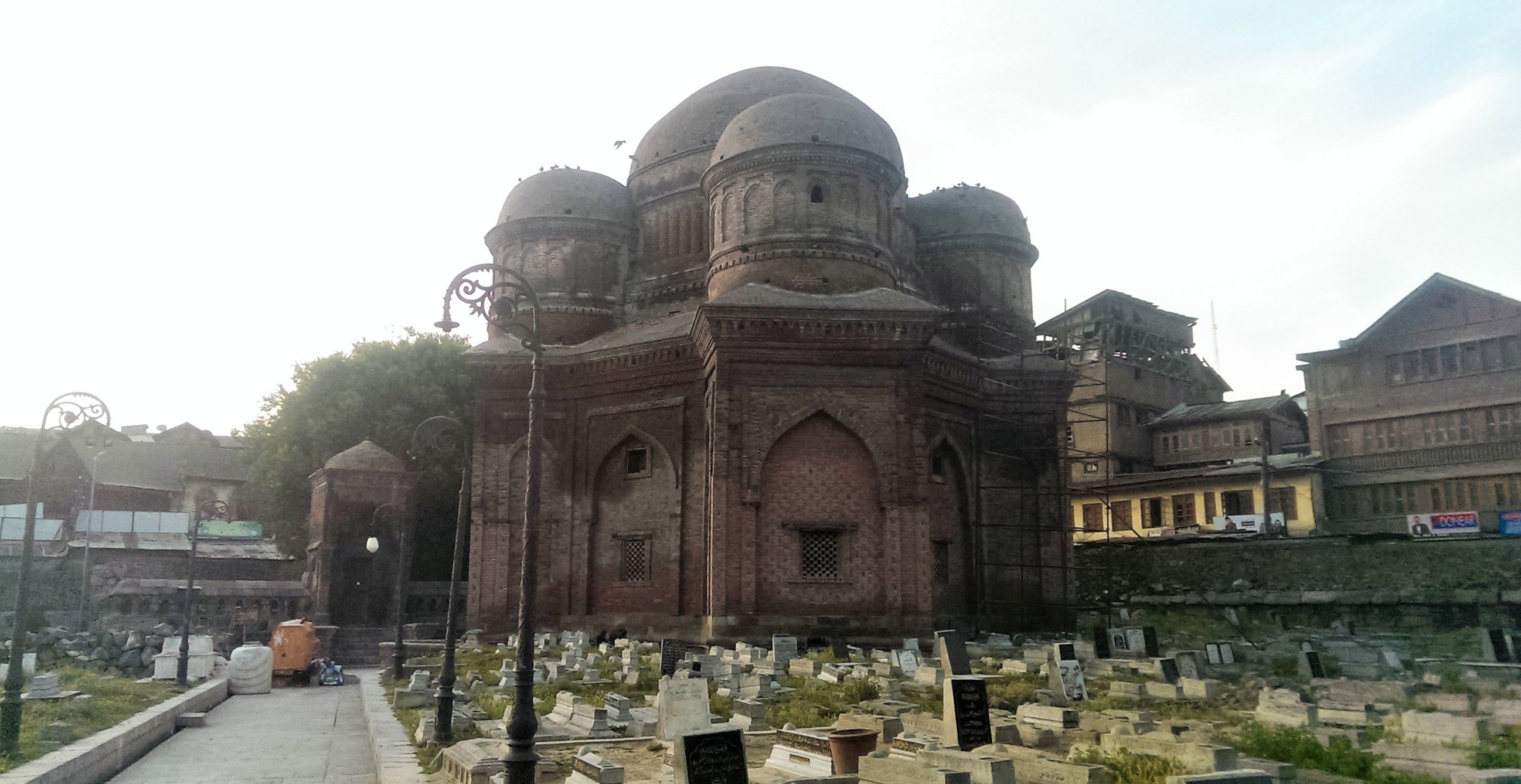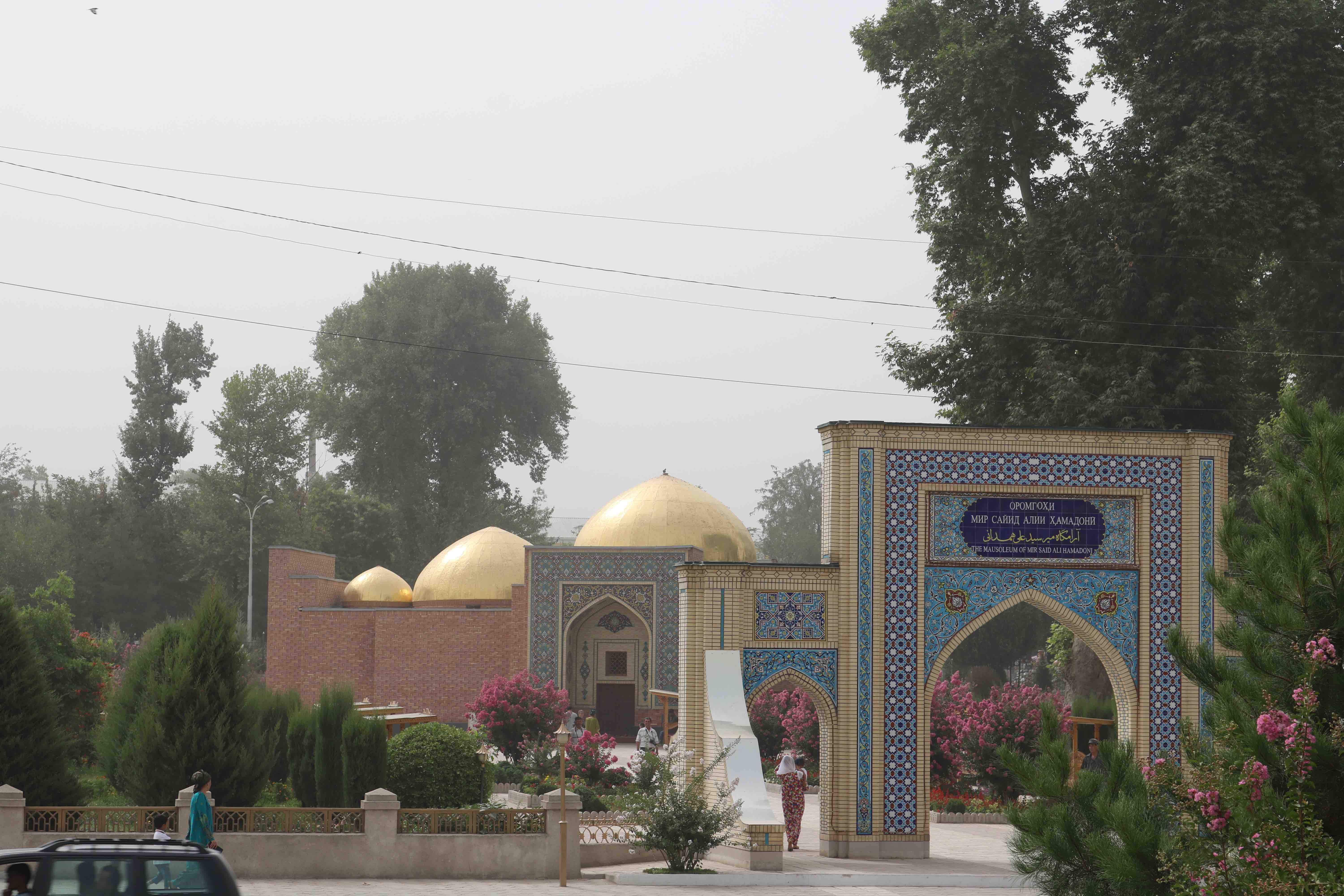|
Seer Hamdan
Seer Hamdan is a town in the Anantnag district of Jammu and Kashmir in India. It has a population of 20,233 people. Economy and culture Seer Hamdan is known for its scenic beauty, sports stadium, skill development I. T. I and Forest Research Centre popularly known as "Sandoz". The area has a water channel known as "Shah Kol" that was constructed by the eighth Sultan of Shah Mir dynasty of Kashmir Zain-ul-Abidin who was known by his subjects as Bod Shah (lit. 'Great King') for irrigation purposes and now it irrigates hectares of land of this town and adjacent villages. There is a subdistrict hospital which caters to the heavy rush of patients from the adjacent areas. Religious tourism Seer Hamdan is 13 km from the main town Anantnag and falls on KP (Khanbal-Pahalgam) road which leads to the tourist destination Pahalgam and also serves a route for Holy Amarnath Cave through which every year thousands of Yatris travel. Seer Hamdan is the site of a holy relic of Muha ... [...More Info...] [...Related Items...] OR: [Wikipedia] [Google] [Baidu] |
Anantnag District
Anantnag district is a district in the Indian union territory of Jammu and Kashmir. It is one of ten districts which make up the Kashmir Valley. The district headquarters is Anantnag city. As of 2011, it was the third most populous district of Jammu and Kashmir (out of 22), after Jammu and Srinagar. Administration At the time of the 2011 census, Anantnag district comprised: Anantnag, Bijbehara, Dooru, Kokernag, Pahalgam, and Shangus tehsils. The district consisted of seven blocks: Breng, Shangus, Achabal, Dachnipora, Qazigund, Khoveripora and Shahabad. Geography Anantnag district has a total area of . The district is bordered by Kargil district and Kishtwar district in the east, Doda district and Ramban district to the south and Ganderbal district to the north and Kulgam, Srinagar, Pulwama and Shopian districts to the west. Climate Anantnag features a moderate climate ( Köppen climate classification. Anantnag's climate is largely defined by its geograp ... [...More Info...] [...Related Items...] OR: [Wikipedia] [Google] [Baidu] |
Jammu And Kashmir (union Territory)
Jammu and Kashmir is a region administered by India as a union territory and consists of the southern portion of the larger Kashmir region, which has been the subject of a dispute between India and Pakistan since 1947, and between India and China since 1962.(a) (subscription required) Quote: "Kashmir, region of the northwestern Indian subcontinent ... has been the subject of dispute between India and Pakistan since the partition of the Indian subcontinent in 1947. The northern and western portions are administered by Pakistan and comprise three areas: Azad Kashmir, Gilgit, and Baltistan, the last two being part of a territory called the Northern Areas. Administered by India are the southern and southeastern portions, which constitute the state of Jammu and Kashmir but are slated to be split into two union territories. China became active in the eastern area of Kashmir in the 1950s and has controlled the northeastern part of Ladakh (the easternmost portion of the region) sinc ... [...More Info...] [...Related Items...] OR: [Wikipedia] [Google] [Baidu] |
India
India, officially the Republic of India ( Hindi: ), is a country in South Asia. It is the seventh-largest country by area, the second-most populous country, and the most populous democracy in the world. Bounded by the Indian Ocean on the south, the Arabian Sea on the southwest, and the Bay of Bengal on the southeast, it shares land borders with Pakistan to the west; China, Nepal, and Bhutan to the north; and Bangladesh and Myanmar to the east. In the Indian Ocean, India is in the vicinity of Sri Lanka and the Maldives; its Andaman and Nicobar Islands share a maritime border with Thailand, Myanmar, and Indonesia. Modern humans arrived on the Indian subcontinent from Africa no later than 55,000 years ago., "Y-Chromosome and Mt-DNA data support the colonization of South Asia by modern humans originating in Africa. ... Coalescence dates for most non-European populations average to between 73–55 ka.", "Modern human beings—''Homo sapiens''—originated in Africa. Th ... [...More Info...] [...Related Items...] OR: [Wikipedia] [Google] [Baidu] |
Sultan
Sultan (; ar, سلطان ', ) is a Royal and noble ranks, position with several historical meanings. Originally, it was an Arabic abstract noun meaning "strength", "authority", "rulership", derived from the verbal noun ', meaning "authority" or "power". Later, it came to be used as the title of certain rulers who claimed almost full sovereignty (i.e., not having dependence on any higher ruler) without claiming the overall caliphate, or to refer to a powerful governor of a province within the caliphate. The adjectival form of the word is "sultanic", and the State (polity), state and territories ruled by a sultan, as well as his office, are referred to as a sultanate ( '). The term is distinct from king ( '), despite both referring to a sovereign ruler. The use of "sultan" is restricted to Muslim countries, where the title carries religious significance, contrasting the more secular ''king'', which is used in both Muslim and non-Muslim countries. Brunei and Oman are the only in ... [...More Info...] [...Related Items...] OR: [Wikipedia] [Google] [Baidu] |
Shah Mir Dynasty
The Shah Mir dynasty was a dynasty that ruled the region of Kashmir in the Indian subcontinent. The dynasty is named after its founder, Shah Mir. During the rule of the dynasty from 1339 to 1561, Islam forcefully established in Kashmir. Origins The dynasty was established by Shah Mir in 1339 CE, there are two theories regarding Shah Mir's origin. Historian A. Q. Rafiqi states that some Persian chronicles of Kashmir describe Shah Mir as a descendant of the rulers of Swat. He thinks it more likely that he was a descendant of Turkish or Persian immigrants to Swat, who had intermarried with local indigenous peoples. It has also been suggested that he belonged to a family which accompanied the sage Mir Sayyid Ali Hamadani, and who were associated to either the Kubrawiya، Sufi groups in Kashmir. According to Jonaraja, Shah Mir was the descendant of Partha (Arjuna) of Mahabharata fame. Abu ’l-Fadl Allami, Nizam al-Din and Firishta also state that Shah Mir traced his descent ... [...More Info...] [...Related Items...] OR: [Wikipedia] [Google] [Baidu] |
Kashmir
Kashmir () is the northernmost geographical region of the Indian subcontinent. Until the mid-19th century, the term "Kashmir" denoted only the Kashmir Valley between the Great Himalayas and the Pir Panjal Range. Today, the term encompasses a larger area that includes the Indian-administered territories of Jammu and Kashmir and Ladakh, the Pakistani-administered territories of Azad Kashmir and Gilgit-Baltistan, and the Chinese-administered territories of Aksai Chin and the Trans-Karakoram Tract. Quote: "Kashmir, region of the northwestern Indian subcontinent. It is bounded by the Uygur Autonomous Region of Xinjiang to the northeast and the Tibet Autonomous Region to the east (both parts of China), by the Indian states of Himachal Pradesh and Punjab to the south, by Pakistan to the west, and by Afghanistan to the northwest. The northern and western portions are administered by Pakistan and comprise three areas: Azad Kashmir, Gilgit, and Baltistan, ... The southern and ... [...More Info...] [...Related Items...] OR: [Wikipedia] [Google] [Baidu] |
Zayn Al-Abidin The Great
, succession1 = Sultan of Kashmir , reign1 = 20 February 1418 – December 1419 , coronation1 = 20 February 1418 , predecessor1 = Ali Shah , successor1 = Ali Shah , reign2 = 7 July 1420 – 5 April 1470 , coronation2 = 7 July 1420 , predecessor2 = Ali Shah , successor2 = Haider Shah , issue = Adham KhanHaji KhanHasan KhanBahram KhanJasrat Khan''two daughters'' , issue-link = , issue-pipe = , house = Shah Mir , dynasty = Gibari (disputed) , father = Sikandar Shah Miri , mother = Mira Khatun , spouse-type = Consort , spouse = Taj Khatun , full name = Ghiyath al-Din Shah Rukh Shahi Khanغیاث الدین شاہ رخ شاہی خانZayn al-Abidinزین العابدین , posthumous name = Akbar-e-Kashmir (Akbar of Kashmir) , birth_date = 25 November 1395 , birth_place = Srinagar, Kashmir Sultanate , birth_name = Shah Rukh , death_date = 5 April 1470 , death_place = Srinagar, K ... [...More Info...] [...Related Items...] OR: [Wikipedia] [Google] [Baidu] |
Muhammad
Muhammad ( ar, مُحَمَّد; 570 – 8 June 632 CE) was an Arab religious, social, and political leader and the founder of Islam. According to Islamic doctrine, he was a prophet divinely inspired to preach and confirm the monotheistic teachings of Adam, Abraham, Moses, Jesus, and other prophets. He is believed to be the Seal of the Prophets within Islam. Muhammad united Arabia into a single Muslim polity, with the Quran as well as his teachings and practices forming the basis of Islamic religious belief. Muhammad was born approximately 570CE in Mecca. He was the son of Abdullah ibn Abd al-Muttalib and Amina bint Wahb. His father Abdullah was the son of Quraysh tribal leader Abd al-Muttalib ibn Hashim, and he died a few months before Muhammad's birth. His mother Amina died when he was six, leaving Muhammad an orphan. He was raised under the care of his grandfather, Abd al-Muttalib, and paternal uncle, Abu Talib. In later years, he would periodically seclud ... [...More Info...] [...Related Items...] OR: [Wikipedia] [Google] [Baidu] |
Mir Sayyid Ali Hamadani
Mir Sayyid Ali Hamadani ( fa, میر سید علی همدانی; CE) was a Persian scholar, poet and a Sufi Muslim saint of the Kubrawiya order. He was born in Hamadan, Iran and preached Islam in Central Asia and Kashmir as he travelled to practice Sufism. He died in Kashmir and was buried in Khatlan, Tajikistan in 1384 CE, aged 71–72. Hamadani was also addressed honorifically throughout his life as the ''Shāh-e-Hamadān'' ("King of Hamadan"), ''Amīr-i Kabīr'' ("the Great Commander"), and ''Ali Sani'' ("second Ali"). Early life The title "Sayyid" indicates that he was a descendant of the Islamic prophet Muhammad, possibly from both sides of his family. Hamadani spent his early years under the tutelage of Ala ud-Daula Simnani, a famous Kubrawiya saint from Semnan, Iran. Despite his teacher's opposition to Ibn Arabi's explication of the ''wahdat al-wujud'' ("unity of existence"), Hamadani wrote ''Risala-i-Wujudiyya'', a tract in defense of that doctrine, as well a ... [...More Info...] [...Related Items...] OR: [Wikipedia] [Google] [Baidu] |
Jhelum River
The Jhelum River (/dʒʰeːləm/) is a river in the northern Indian subcontinent. It originates at Verinag and flows through the Indian administered territory of Jammu and Kashmir, to the Pakistani-administered territory of Kashmir, and then into the Pakistani province of Punjab. It is the westernmost of the five rivers of the Punjab region, and flows through the Kashmir Valley. It is a tributary of the Chenab River and has a total length of about . Etymology Anjum Sultan Shahbaz, a Pakistani author, recorded some stories of the name Jhelum in his book ''Tareekh-e-Jhelum'' as:''Many writers have different opinions about the name of Jhelum. One suggestion is that in ancient days Jhelumabad was known as Jalham. The word Jhelum is reportedly derived from the words Jal (pure water) and Ham (snow). The name thus refers to the waters of a river (flowing beside the city) which have their origins in the snow-capped Himalayas.''However, some writers believe that when Mughal pr ... [...More Info...] [...Related Items...] OR: [Wikipedia] [Google] [Baidu] |






